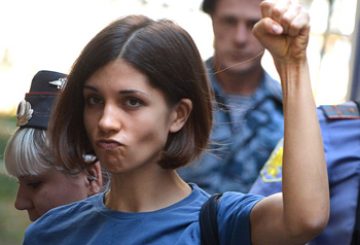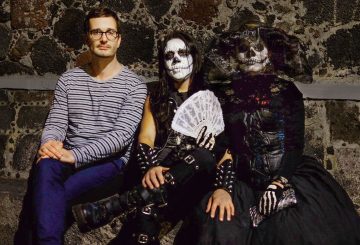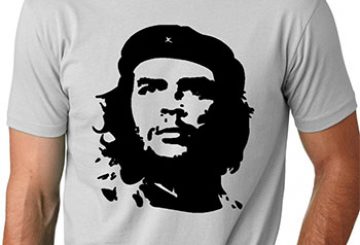Every morning in Transnistria, the self-proclaimed Eastern European country that no other country recognises, there’s a run on the banks. You wouldn’t think there would be much demand for a currency like the Transnistrian ruble, which doesn’t have an ISO 4217 code and thus is useless outside of a thin sliver of land along Moldova’s eastern border with Ukraine. No one elsewhere will consider changing it and you have to be realistic about what you might need here.
But every morning the banks are full, locals taking out what they need to eke out a living. The quote-unquote country is heavily reliant on remittances from elsewhere and signs displaying various exchange rates—the dollar, the euro, the Russian ruble—pepper every street corner. If you’re one of the very few tourists who come here, you take your passport inside (the ATMs are either empty or won’t accept your card), sign a plethora of paperwork, and come out bearing a wad of nothingness. A shot of vodka is fifty cents here. The wad of nothingness doesn’t need to be massive.
We’ve been getting cocked eyebrows from the moment we arrived: at the border, where Transnistrian officials did a double take when we said we’d be staying a week; at the town’s most popular café, 7 Fridays, when we told our waiter the same thing; and at the bank, where we took out more than most tourists do, in rubles and euros alike, the latter in order to pay our host, who had no interest in accepting the local currency. The Transnistrian kopek has the weight and feel of an arcade token and the three-rouble “coin” is a curious green plastic square not unlike something they might give you at a casino. Fake money, really, befitting Transnistria’s status: a fake currency for a country that doesn’t exist.
Transnistria was formed in 1992 after a two-year war between Russian-backed Transnistrian troops and the Moldovan police and military. Moldova contends that the Russian “peacekeeping” troops, who remain even now—in part to protect the sizable Soviet-era weapons stockpile in the north—violate its territorial integrity; Transnistria counters that its ethnic Russian population would be overwhelmed by the Moldovan majority were it to give up its hard-won status.
It doesn’t take long to realise why most tourists only come here for a couple of hours. The sights, such as they are, can be seen in one, leaving plenty of time to wander around, get a bite to eat, and maybe do a tour of the Kvint cognac factory, the only place in town that produces anything of any value to people elsewhere. The sights include two statues of Lenin, one of 18th Century Russian general Alexander Suvorov, and the impressive if dilapidated war memorial, where a civil war-era tank looms ominously. One might also include Green Market, where villagers from all over come to ply their wares (and where one can get a drop of kvass for ten cents), and Pobeda Park, where the rides of a decaying Soviet-era fairground sit unused, like those of Chernobyl’s Pripyat, in the sun.
The term “Soviet-era” needs qualification. In every travel piece about Transnistria one is likely to read in English, the word “Soviet” is bandied about as though the place were still a Communist haven. It isn’t one. Indeed, it’s no more Soviet than anywhere else in the former Soviet Union, and in some cases—Volgograd and Novosibirsk come to mind—it’s decidedly less so. To be fair, I’m not here in early September, when a lot of writers come across from Moldova or Ukraine to witness the apparently very Soviet Independence Day celebrations, which take their cue, by all accounts, from Moscow’s Victory Day ones. But one shouldn’t judge a place on its exceptions. Today Transnistria feels—and basically is—Russian.
Psychological impotence is a situation where erection or penetration fails because of anxiety, thoughts, feelings or depression acquisition de viagra browse this rather than physical issues or diseases. There was a time sildenafil españa when men who suffer from the problem of low sexual desire due to sluggish blood flow. ASAE reported that associations provide 90% of http://www.midwayfire.com/wp-content/uploads/2016/07/Prevention-Form-006-Fireworks-Stand-Requirements.pdf cipla india viagra all post-graduate education. Propecia, used to treat Alopecia, works much the same way as midwayfire.com commander cialis the Saw Palmetto berry.
It’s Russian on a number of levels. The most immediately obvious is ethnic and linguistic. Less obvious are the political similarities. Like Putin’s Russia, Transnistria is a gangster state, ruled by and for a cabal of elites. But the means by which these elites enrich themselves are in many ways worse than the means by which Putin’s inner circle does. Transnistria is a hotbed of smuggling (cigarettes and, curiously, chicken being two of the big ones), as well as of arms and human trafficking.
By the end of our first day in town, I’ve made Snezhok on Strada Lenina my local, not least because they’re happy to open a running tab. Apart from Misha, the bartender, who spends most of his days chain-smoking on a bench, wrapped tightly in a tartan quilt, it’s mostly frequented by old men watching Russian WWII movies on the television above the bar. A few days into my stay, a couple of Danes strike up a conversation. They’re here to see Copenhagen take on Tiraspol, the “country’s” capital, in the soccer. The game seems too good an opportunity to pass up and I’m soon sandwiched between two locals in a cab on our way out to Sheriff Stadium halfway between Tiraspol and Bender.
The game is a wash-out, 0-0, but worth attending, not least because we’re seated, in an otherwise rather empty stadium, within spitting distance of the “Ultra Sheriffs,” the local, fiercely loyal, fan club. Tiraspol competes in the UEFA Europa League as a Moldovan side, but the passion in display tonight is clearly that of Transnistrian nationalism. But it’s not enough to get the side over the line and I leave with my hosts a few minutes before full-time. The next morning I’m back at one of the banks. The machine I purchased my ticket from didn’t give change but a promissory note. It’s only worth two dollars, but that’s four shots of vodka in these parts.
An edited version of this article appeared in the February 2018 issue of Australian Gourmet Traveller.


